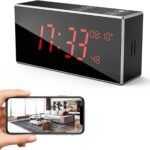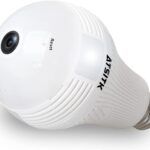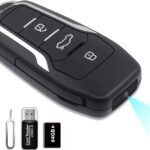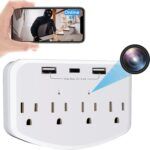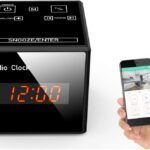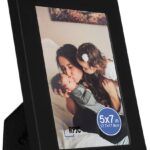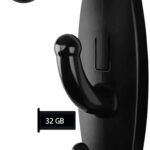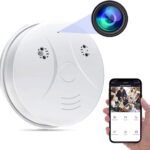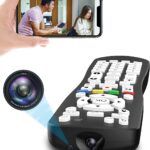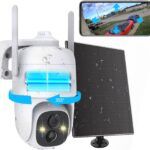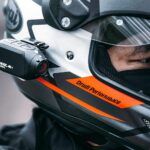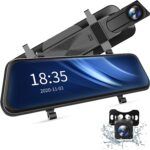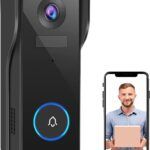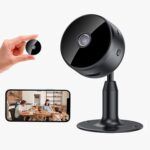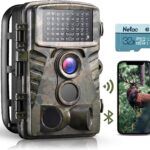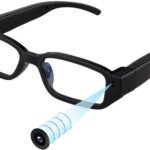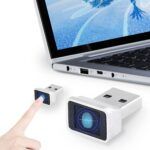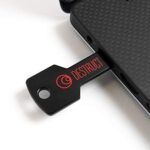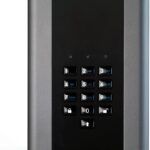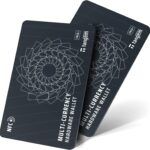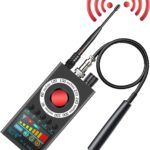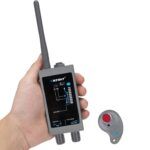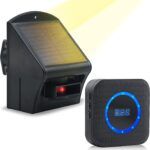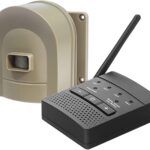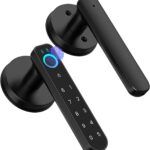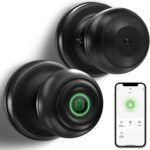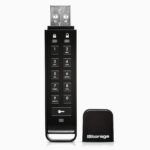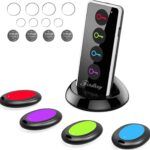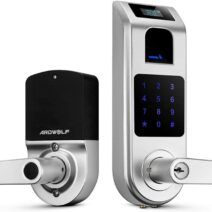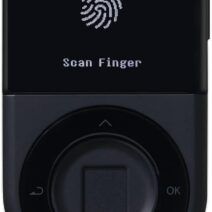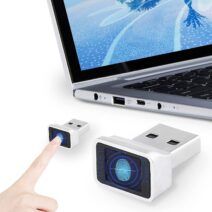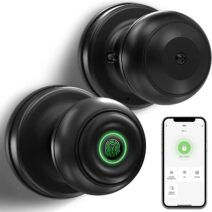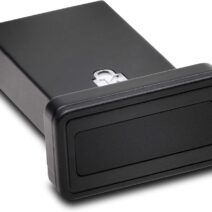- What is biometric security?
Biometric security is a type of security system that uses unique physical characteristics or behavioral traits of an individual to identify and verify their identity. This technology relies on the fact that every individual has unique biometric markers such as fingerprints, facial recognition, iris scans, voice recognition, and even the way they walk. Biometric security systems use advanced algorithms and pattern recognition software to match these unique biometric markers to a pre-registered profile in order to grant access to secure areas, devices, or data. Biometric security is increasingly popular in high-security environments such as airports, military installations, and government buildings, as well as in everyday use for personal devices and home security systems.
- How do fingerprint readers work?
Fingerprint readers are a type of biometric security technology that use an individual’s unique fingerprints to identify them. They work by scanning and analyzing the pattern of ridges and valleys on a person’s fingertip. The reader captures an image of the fingerprint and analyzes the unique characteristics such as ridge endings, bifurcations, and other features. This information is then converted into a digital code that is stored in a database or a device’s memory.
When a person wants to access a secure area, computer, or device, they place their finger on the reader, which scans their fingerprint and compares it to the stored digital code. If the fingerprint matches, the system grants access. Fingerprint readers are widely used for security purposes, as they offer a high level of accuracy and are difficult to fake or duplicate.
- Are biometric security devices more secure than traditional passwords?
Biometric security devices are considered more secure than traditional passwords because biometric data, such as fingerprints, is unique to each individual and difficult to replicate. Unlike passwords, which can be guessed or stolen, biometric data is tied to the individual and cannot be easily duplicated or shared. Additionally, biometric security devices typically have higher levels of encryption and authentication, making it more difficult for unauthorized users to gain access.
However, it is important to note that biometric security products are not infallible and can still be subject to hacking or other security breaches. As with any security measure, it is important to use biometric security in conjunction with other security protocols to ensure maximum protection.
- Can biometric security devices be hacked?
While biometric security devices are generally considered more secure than traditional passwords, it is still possible for them to be hacked. For example, if an attacker manages to steal the biometric data, such as fingerprints or facial recognition data, they could potentially use it to gain unauthorized access. However, it is much more difficult to steal biometric data than it is to guess a weak password. Additionally, many biometric authentication devices use advanced encryption and other security measures to protect the biometric data and prevent unauthorized access. It is important to choose a reputable and secure biometric device and to keep the device’s software and firmware up to date to minimize the risk of hacking through potential security flaws and exploits.
- How accurate are biometric security scanners?
Biometric security devices are generally considered to be highly accurate. The accuracy of a biometric system is usually measured in terms of the false acceptance rate (FAR) and the false rejection rate (FRR). The FAR is the likelihood that an unauthorized user will be mistakenly granted access, while the FRR is the likelihood that an authorized user will be denied access. A good biometric system will have a low FAR and a low FRR.
The accuracy of biometric security items can be affected by a number of factors, such as the quality of the sensor used to capture biometric data, the cleanliness of the sensor, and the physical condition of the user. For example, a fingerprint reader may have trouble recognizing a fingerprint that is dirty or damaged. However, with proper maintenance and calibration, biometric security products can provide a high level of accuracy and safety.
- How do I set up a biometric security device?
Setting up a biometric security device can vary depending on the device and manufacturer. Generally, you will need to enroll your biometric data, such as fingerprints or facial recognition, into the device’s system. This usually involves pressing your finger on a sensor or allowing the device to scan your face.
After your biometric data has been enrolled, you may need to set up additional security measures, such as a PIN or password. It is important to follow the manufacturer’s instructions carefully to ensure that the device is set up correctly and securely. In some cases, you may also need to install software or drivers on your computer or mobile device in order to use the biometric security gadget.
- Can multiple people use the same biometric device?
In most cases, biometric security devices can be set up to recognize and store multiple users’ biometric data. This means that multiple people can use the same device to access a shared system or device, such as a shared computer or safe. However, it is important to ensure that each user’s biometric data is properly registered and stored within the device’s database to ensure accurate identification and access control.
Some biometric security devices, such as fingerprint door locks, may also allow for the creation of temporary access codes or PINs for visitors or guests who do not have their biometric data registered in the system. This can be a useful feature for situations where temporary access is required, such as for a houseguest or service technician.
- What happens if my biometric security device fails?
If a biometric security device fails, it can be frustrating and even concerning. However, most devices have backup measures in place to ensure you can still access the system. For example, many fingerprint readers have a PIN code backup option in case the fingerprint scanner is not working correctly. Similarly, if a facial recognition system fails to recognize your face, you may be prompted to enter a secondary authentication method, such as a password.
It’s also essential to keep your biometric safety devices up to date with software updates and regular maintenance to avoid potential issues. If you encounter persistent problems with your product, it’s best to contact the manufacturer or a professional for help.
- What are some of the disadvantages of biometric products?
While biometric security devices have many benefits, there are also some disadvantages to consider. One of the main concerns is privacy. Biometric data, such as fingerprints or facial recognition, is unique to each individual and can be sensitive information. There is always a risk of this data being stolen or misused if it falls into the wrong hands. Additionally, if a biometric device malfunctions, it can lead to frustration and even lockout, especially if there is no backup option available.
Another potential disadvantage is cost. Security devices using biometric data can be more expensive than traditional security measures, such as passwords or keys. There may also be additional costs associated with maintenance or repairs. Additionally, some individuals may have physical or medical conditions that make it difficult or impossible for them to use these devices, limiting their effectiveness.
- Can biometric security devices be used with other security measures?
Biometric security devices can be used in conjunction with other security measures to provide additional layers of protection. For example, a building might use a combination of biometric authentication and traditional keycard access control systems to ensure that only authorized personnel can access certain areas. Biometric authentication could also be combined with security cameras to provide an additional layer of surveillance and monitoring. In addition, biometric data can be used for identity verification in financial transactions, online banking, and other sensitive transactions. Overall, biometric security can provide enhanced security when used in conjunction with other measures.
- How do biometric security devices handle false positives?
Biometric protection devices are designed to minimize false positives, which occur when the system identifies an unauthorized user as an authorized user. One way to minimize false positives is to require multiple forms of identification, such as a fingerprint scan and a password. Additionally, biometric systems use advanced algorithms and machine learning to analyze the biometric data and identify patterns that can distinguish authorized users from unauthorized users.
However, false positives can still occur, particularly if the biometric data is not captured properly or if the system has not been properly calibrated. In these cases, the system may reject an authorized user or accept an unauthorized user, which can compromise security. To address this issue, many biometric authentication systems allow for manual overrides or alternative forms of identification in case of a false positive. It is also important to regularly test and calibrate the system to ensure that it is functioning properly and accurately identifying authorized users.
Biometric security devices and gadgets offer you the highest level of convenience and security for your personal items or data. Using your fingerprints, facial recognition or other biometric data for access is both secure and quick.
Showing all 7 products:

Ardwolf Fingerprint Door Lock
$109.99
D’CENT Biometric Cryptocurrency Cold Wallet
$138.00
DDSKY USB Fingerprint Reader
$34.99
Duziro Biometric Fingerprint Door Lock
$79.99
GeekTale Smart Door Knob
$99.99
Kensington FIDO USB Fingerprint Reader Key (Windows & Mac)
$69.99
Kensington Windows Login USB Fingerprint Reader
$44.99
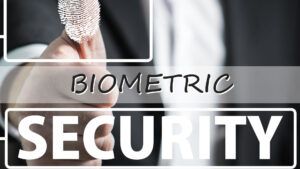
Welcome to our shop page featuring biometric security and protection devices and gadgets. We offer a range of products to ensure your safety, security, and protection. Our collection includes fingerprint readers that allow you to log in to your computer, fingerprint door locks for your home or office, safes with biometric authentication, and much more. Our goal is to provide you with the latest and most advanced biometric technology to help keep you and your belongings safe.
Biometric security and protection devices and gadgets are becoming increasingly popular in today’s world. These devices use unique physical characteristics, such as fingerprints, facial recognition, and voice recognition, to identify and verify individuals. Biometric authentication is more secure than traditional methods, such as passwords and PINs, as it is nearly impossible to duplicate or fake a biometric characteristic. Our shop page features a wide range of biometric security and protection devices and gadgets to ensure that you have access to the most advanced and reliable products on the market.
Biometric Security Devices FAQ:
When choosing a biometric security device, it’s important to consider factors such as the level of security required, the number of users who will be accessing the device, the type of biometric identification used, and the compatibility with other security systems.
For example, if you are looking to secure access to a building with high security requirements, a fingerprint scanner with multiple verification factors (such as requiring a PIN in addition to a fingerprint) may be necessary. On the other hand, if you simply need to secure a personal device like a laptop, a simple fingerprint reader may be sufficient.
It’s also important to consider the cost and maintenance requirements of the device, as well as any potential privacy concerns. Ultimately, choosing the right biometric security device depends on your specific security needs and budget.

